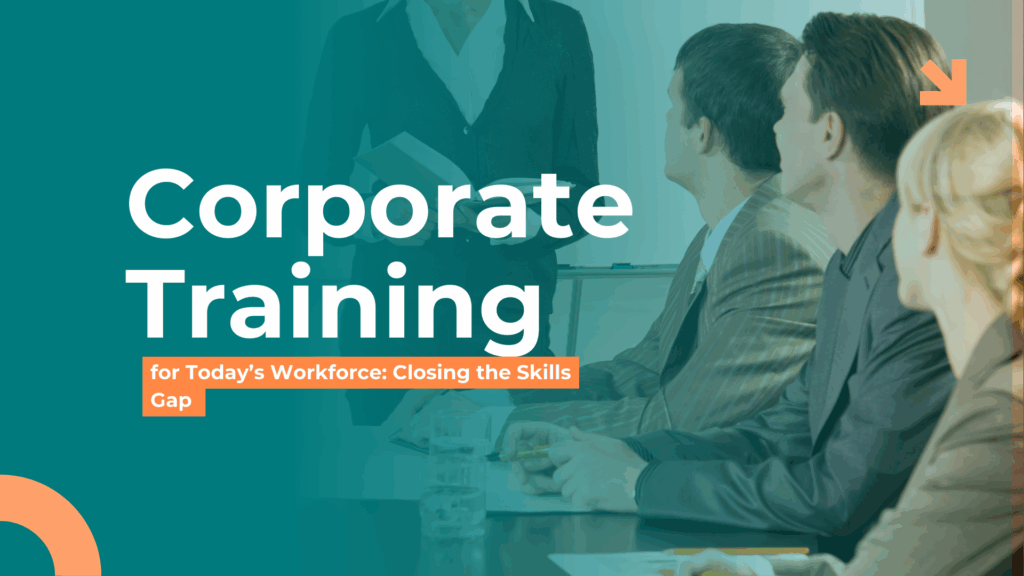In today’s fast-paced business environment, technological advances, changing job roles, and evolving industry standards are creating a widening skills gap. Organizations are struggling to find employees who possess both the technical and soft skills needed to thrive. Corporate training has emerged as a critical solution to bridge this gap, ensuring employees remain competent, adaptable, and aligned with organizational goals.
Investing in effective training not only improves workforce performance but also drives employee engagement, retention, and long-term growth.
Understanding the Skills Gap
The skills gap occurs when the abilities of employees do not match the needs of the organization. It can manifest in several areas:
- Technical Skills: New technologies like AI, data analytics, and cloud computing require specialized knowledge.
- Soft Skills: Leadership, communication, emotional intelligence, and critical thinking are increasingly in demand.
- Digital Literacy: Rapid digitization demands employees who can adapt to modern tools and platforms.
Organizations that fail to address the skills gap risk reduced productivity, lower innovation, and declining competitiveness.
Key Trends in Corporate Training
- Personalized & AI-Powered Learning
Artificial intelligence is revolutionizing corporate training by creating highly personalized learning journeys. Training modules are now tailored to each employee’s strengths, weaknesses, career goals, and learning style, ensuring maximum relevance and impact. AI can analyze performance metrics, suggest targeted learning paths, and provide real-time feedback, helping employees acquire skills more efficiently.
Example: A marketing professional may receive a custom mix of modules on advanced analytics, AI-driven campaign strategies, and leadership skills, while a finance employee focuses on risk management and regulatory compliance.
- Microlearning & On-Demand Training
Busy professionals often struggle to dedicate hours to traditional training programs. Microlearning solves this by delivering short, focused, and actionable learning sessions that can be completed in minutes. Coupled with on-demand access, employees can learn anytime, anywhere, without disrupting their workflow.
Impact: Improves retention, encourages continuous learning, and allows organizations to roll out updates or new skills quickly.
- Soft Skills Development
As automation and AI handle repetitive tasks, soft skills have become critical differentiators. Modern corporate training increasingly emphasizes empathy, leadership, adaptability, problem-solving, and effective communication, equipping employees to collaborate effectively and thrive in dynamic, diverse environments.
Example: Workshops on conflict resolution, leadership simulations, and emotional intelligence assessments help managers lead teams with confidence and sensitivity.
- Gamification & Interactive Learning
Engagement is key to learning retention. Gamification incorporates interactive modules, scenario-based simulations, and challenges that make learning immersive and enjoyable. Employees can practice real-world scenarios in a safe, controlled environment, building confidence before applying skills on the job.
Impact: Boosts motivation, reinforces learning through experience, and fosters healthy competition that drives performance improvement.
- Blended Learning Approaches
Blended learning combines online modules, live workshops, mentoring, and coaching sessions, creating a holistic, flexible, and highly effective training experience. This approach accommodates different learning styles, allowing employees to absorb information digitally and apply it through hands-on practice.
Impact: Enhances skill application, supports long-term retention, and ensures that training aligns with organizational goals and real-world challenges.

Benefits of Corporate Training
Bridging the Skills Gap: Ensures employees are equipped for current and future roles.
- Employee Engagement: Well-structured training programs enhance motivation and loyalty.
- Productivity Gains: Skilled employees complete tasks faster and more accurately.
- Leadership Development: Prepares mid-level and senior employees for managerial roles.
- Organizational Agility: A skilled workforce can adapt quickly to industry changes.
Challenges in Implementing Corporate Training
- Time Constraints: Employees may struggle to balance work responsibilities with learning.
- Budget Limitations: Training programs require investment in tools, resources, and facilitators.
- Measuring Impact: Quantifying the effectiveness of soft skill development can be challenging.
- Keeping Content Relevant: Rapid technological and market changes require frequent updates.
- Employee Engagement: Ensuring learners actively participate and apply new skills can be difficult.
Strategies to Close the Skills Gap
Conduct Skill Assessments: Identify gaps through performance evaluations and analytics.
Leverage Technology: Use AI, LMS platforms, and digital tools to provide personalized training.
Promote Continuous Learning: Encourage employees to take ownership of their professional development.
Incorporate Experiential Learning: Use simulations, real-world projects, and peer learning to reinforce skills.
Align Training with Organizational Goals: Ensure learning outcomes support both employee growth and company objectives.
Case Examples of Effective Corporate Training
- Tech Companies: Use AI-driven analytics to tailor software training programs to individual needs.
- Manufacturing Firms: Implement blended learning for equipment operation, safety, and soft skills.
- Financial Institutions: Combine online microlearning with leadership workshops to upskill managers for regulatory changes.
The Future of Corporate Training
Corporate training is moving beyond compliance-focused programs to become a strategic tool for workforce transformation. Trends like immersive AR/VR learning, AI-powered coaching, and data-driven analytics are shaping the next generation of employee development.
Organizations that proactively address the skills gap will gain a competitive advantage, foster innovation, and retain top talent.
Final Words
Closing the skills gap is not just about teaching new skills—it’s about building adaptable, confident, and future-ready employees. Corporate training is the bridge that connects employee potential with organizational goals.
At Ebullient, we specialize in designing customized corporate training programs that address both hard and soft skills. Our approach combines AI-driven learning, interactive workshops, and real-world simulations to create measurable impact.
Discover how we can help your organization equip employees for today’s challenges and tomorrow’s opportunities at https://ebullient.in. Let’s shape a workforce that thrives, innovates, and drives success.
FAQ – Corporate Training & Skills Gap
- What is the skills gap, and why does it matter?
The skills gap occurs when employee capabilities do not meet organizational needs, affecting productivity, innovation, and competitiveness. - How long does it take to close a skills gap?
It depends on the skills being developed, the training format, and employee engagement—ranging from weeks for microlearning to months for leadership programs. - Are online training programs effective?
Yes. When combined with interactive elements, mentoring, and real-world applications, online programs can be highly effective. - How can organizations measure training effectiveness?
Through performance metrics, employee feedback, project outcomes, and competency assessments. - Can training programs be customized for different industries?
Absolutely. Programs are tailored to industry requirements, employee roles, and organizational goals for maximum impact.



